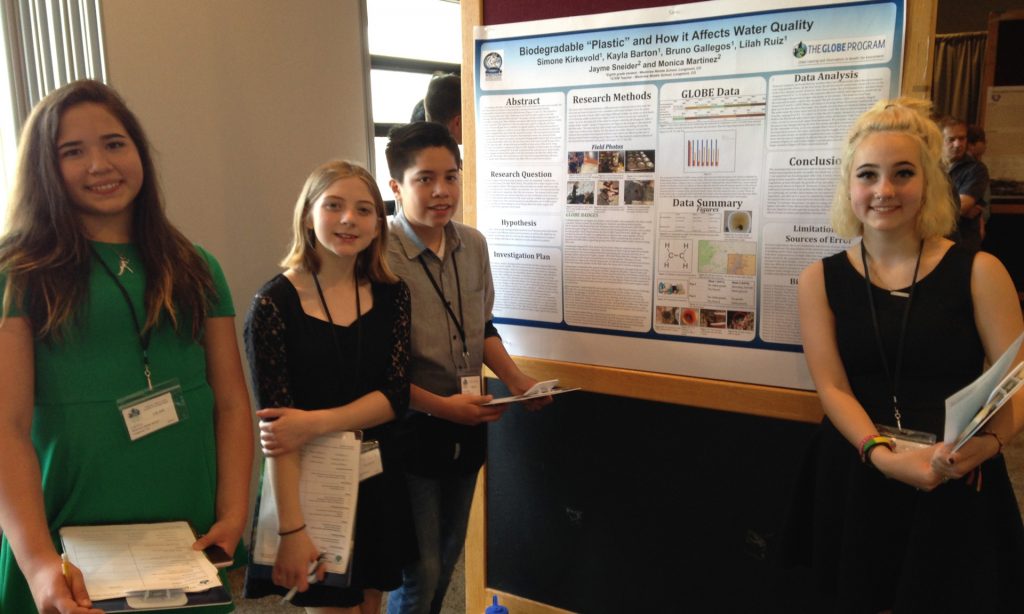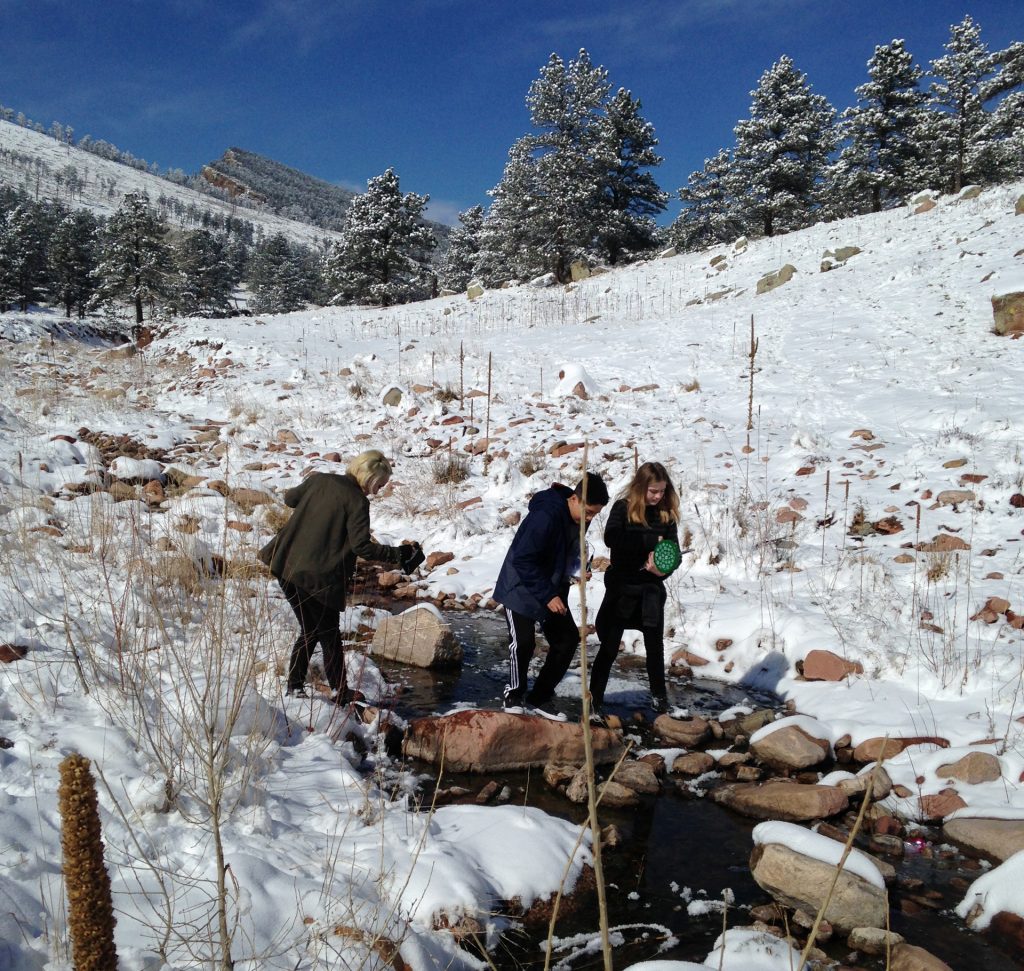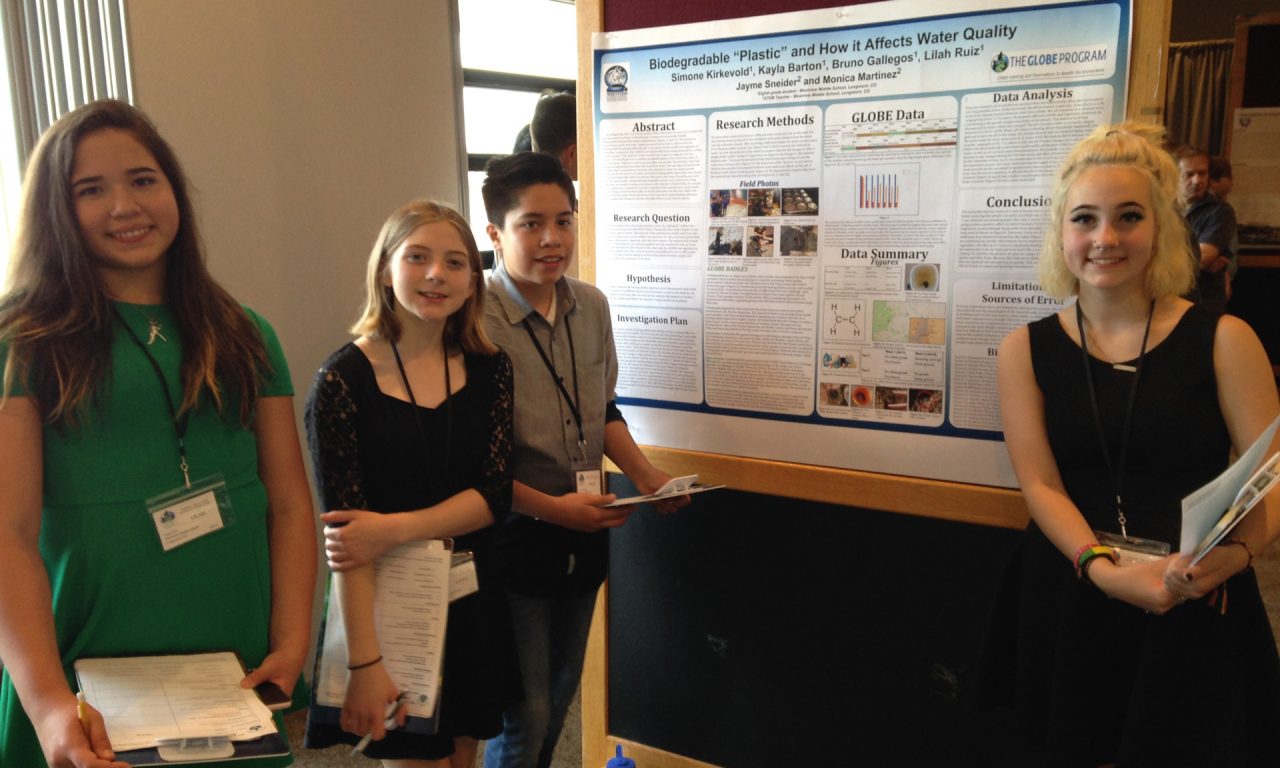Students from Westview Middle School in Longmont worked with staff last year on various citizen science projects. This is a report of one of those projects.
How many times have you wondered to yourself, “Can I save the world?” Due to the current state of climates and oceans, the world is in dire need of saving. According to the U.S. Department of Commerce and the National Oceanic and Atmospheric Administration, temperatures are rising exponentially, oceans will have more plastic than fish in them by 2050, sea levels are rising, and more and more animals go extinct every day.
Surveying the data showed one of the antagonists of the world was plastic. A group of three middle school students asked the question, “Well, what can we do?” We ended up deciding that forming a plastic entirely made out of materials accessible in almost all countries and easy to make would be a good start. After researching common allergies and accessibility, we found bananas would be the best foundation for this plastic. We created our plastic by pulverizing banana peels and heating them at high temperatures for extended periods of time. Finally, we laid them outside to dry.
Once the plastic mimic was made, phase one of our project had begun. We placed it out in two locations, Heil Valley Ranch and McIntosh Lake, to observe how it biodegraded when emerged in nature. It was also placed in tubs to observe the changing pH and color, as well as other varying qualitative data. From these locations, we found our material steadied the pH out to a 7, which is an ideal level for drinking water. Also after only a couple of weeks being emerged in nature, it had begun to decompose and become a part of the water. After three months of being placed in nature, all of the plastics had completely decomposed. Following the first successes of our biodegradable plastic in water, we took it a step further and placed it on land to further examine how the plastic affected soil quality. Once it was completely decomposed, we planted three pea seeds, and found no changes among the soil quality because the pea seeds grew at an average rate.
Seeing Results
From watching the plastic decompose in the two locations, water quality impacted the results greatly. Heil Valley Ranch had very clear, clean water, while McIntosh Lake water was murky. The plastic placed at Heil Valley Ranch took a longer time to completely decompose—three months—while at McIntosh lake it took 2.5 months. McIntosh Lake also showed more acidic water quality, where Heil Valley Ranch was more neutral. We speculated why McIntosh Lake water was more acidic, causing us to ask more questions regarding water quality.
Once we had organized all of our data collected over a five-month period, we made a scientific poster and traveled to CU-Boulder to present our findings at the May 2018 Colorado GLOBE Research Symposium, where we received first place among our peer reviewers!
Through the journey, the group’s interest in water quality related to sustainability cultivated into something more than a desire to save the world; it cultivated into the desire to learn. We expanded our questions and curiosity to new ideas for gasoline alternatives, more ways to make natural plastics, and ways to advocate for these ideas. Throughout this project, we have been drafting and researching ideas for sustainability that we may eventually pursue as a group.
The more we learned, the more we wanted to help, and the more our curiosity about the world around us grew.




